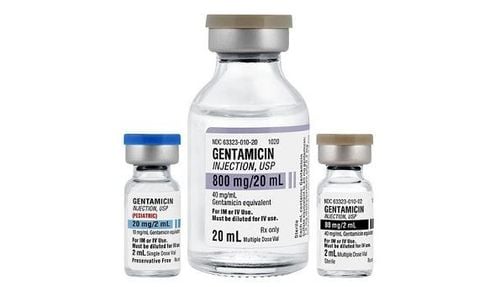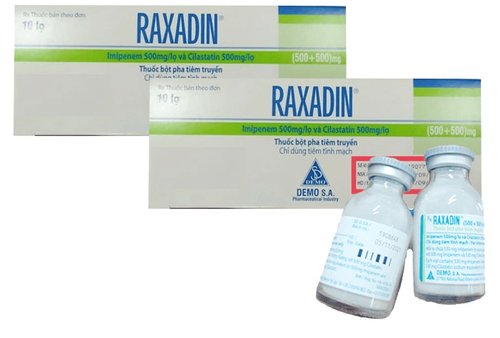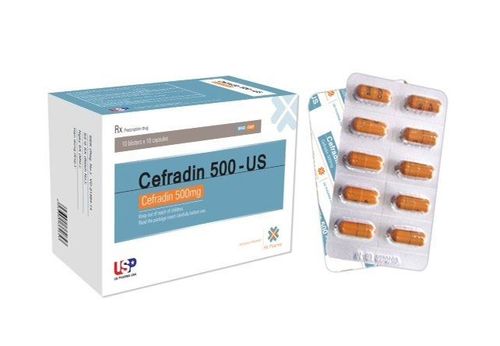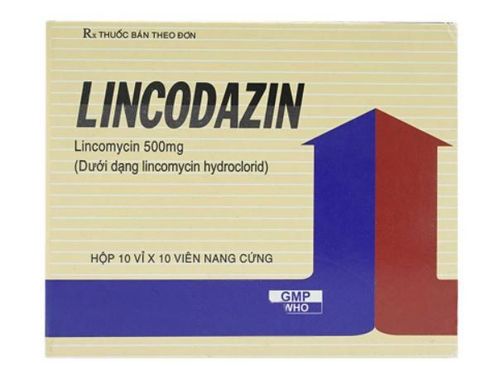This is an automatically translated article.
Amikacina is indicated for the treatment of infections caused by inflammation, severe bacterial infections. The drug is often used in combination with other antibiotics to increase the effectiveness of treatment. So how is Amikacina used?
1. What is Amikacina?
Amikacina medicine contains the main ingredient Amikacin 500mg / 2ml and excipients just enough provided by the manufacturer.
Dosage form: Solution for injection.
Packing form: Box of 100 tubes.
2. What effects does Amikacina have?
Amikacina is indicated for treatment in the following cases:
Treatment of infections caused by gram-negative and gram-positive bacteria, including Pseudomonas sp. Infections of the respiratory tract, urinary tract, abdominal cavity; Gynecological infections; Septicemia ; Bone and joint infections; Skin and skin structure infections. Cases of contraindications to drug use:
Patients who are allergic to the active ingredient Amikacin or other excipients in the composition of the drug. People with myasthenia gravis.
3. Dosage and how to use Amikacina
Amikacina is prepared in the form of a solution for injection, can be used by intramuscular injection, intravenous infusion.
It is necessary to measure the patient's weight before treatment to calculate the correct dose. Renal function status should be estimated by measuring serum creatinine or calculating the endogenous creatinine clearance rate. Reassessment of renal function should be performed periodically during treatment.
The following is the recommended dose of Amikacina:
Intramuscular: The usual dose for adults and elderly children, with normal renal function is 15mg/kg/day, divided into equal doses to be administered at different intervals. 8 hours or 12 hours each time. The daily dose should not exceed 15mg/kg or 1.5g. Neonates and premature infants: The starting dose is 10mg/kg, followed by 7.5mg/kg, given every 12 hours. The total therapeutic dose should not exceed 15mg/kg/day. The recommended duration of treatment is 7-10 days. People with kidney damage, it is necessary to measure serum amikacin levels, monitor renal function and adjust the dose accordingly. Amikacina is indicated in uncomplicated urinary tract infections, at the recommended dose of 250mg, taken twice daily. Intravenous infusion: The daily dose is the same as that for the intramuscular route. The total daily dose should not exceed 15mg/kg/day, the dose can be divided into 2-3 times per day. Solution for intravenous infusion is mixed with a dose of 500mg Amikacin into 100-200mL of 0.9% sodium chloride solution or 5% dextrose, infused over a period of 30-60 minutes for adults. For children, the volume of infusion depends on the needs of the patient, but there must be enough fluid for infusion in 1-2 hours. Amikacina should not be mixed with other drugs, especially beta-lactam antibiotics.
The above dosage is only the recommended dose, the treating doctor will base on the condition of each patient to prescribe the appropriate dosage.
4. Side effects of the drug Amikacina
Before prescribing, doctors always weigh the benefits of Amikacina's effectiveness against the possible risks to the patient while taking the drug. However, some cases when using Amikacina may still occur undesirable effects as follows:
The drug has the risk of causing symptoms such as deafness, loss of balance when used in high doses and for a long time. The drug increases neuromuscular toxicity with signs such as acute muscle paralysis and dyspnea possible. Renal toxicity: Increased serum creatinine, blood albumin, blood azote. Urine contains red blood cells, white blood cells, platelets and oliguria. Changes in renal function are usually reversible upon discontinuation of the drug. Other adverse effects: Skin rash, drug fever, headache, paresthesia, myalgia, nausea, vomiting, eosinophilia, arthralgia, anemia and hypotension. In the course of taking the drug, when the patient encounters the above undesirable effects or any symptoms, immediately notify the doctor for advice and appropriate intervention.
5. Amikacina drug interactions
Inform your doctor about the drugs you are using such as prescription and non-prescription drugs, functional foods, herbs... to avoid possible interactions when combined.
The following are some drugs that are likely to interact with Amikacina when combined:
Should not be used with drugs in the Aminoglycoside group, Polymyxin, Furosemide diuretics because of the increased risk of nephrotoxicity and ototoxicity. When Amikacina is used in combination with drugs of the Curare class, there is a risk of increasing the toxicity of Curare. Neuromuscular blocking agents when used concurrently with Amikacina may increase the risk of neuromuscular blockade leading to paralysis of the respiratory system.
6. Some notes when using Amikacina
Here are some notes when taking Amikacina to help achieve the effectiveness of the drug as well as reduce the risk of experiencing side effects:
It is important to note the use of Amikacina in patients with ear and kidney disease. Monitor renal function and hearing regularly throughout the period of taking the drug. The benefits of the drug should be weighed against the risk of unwanted effects when administered to pregnant and lactating women. In case of renal failure: Amikacina should only be used when clearly needed and the dose should be calculated based on creatinine clearance. Repeated and prolonged use should be avoided in the elderly. Above is the important information of Amikacina, carefully reading the instructions before use and strictly following the doctor's instructions will help patients achieve effective treatment, ensure safety for health.
Please dial HOTLINE for more information or register for an appointment HERE. Download MyVinmec app to make appointments faster and to manage your bookings easily.













